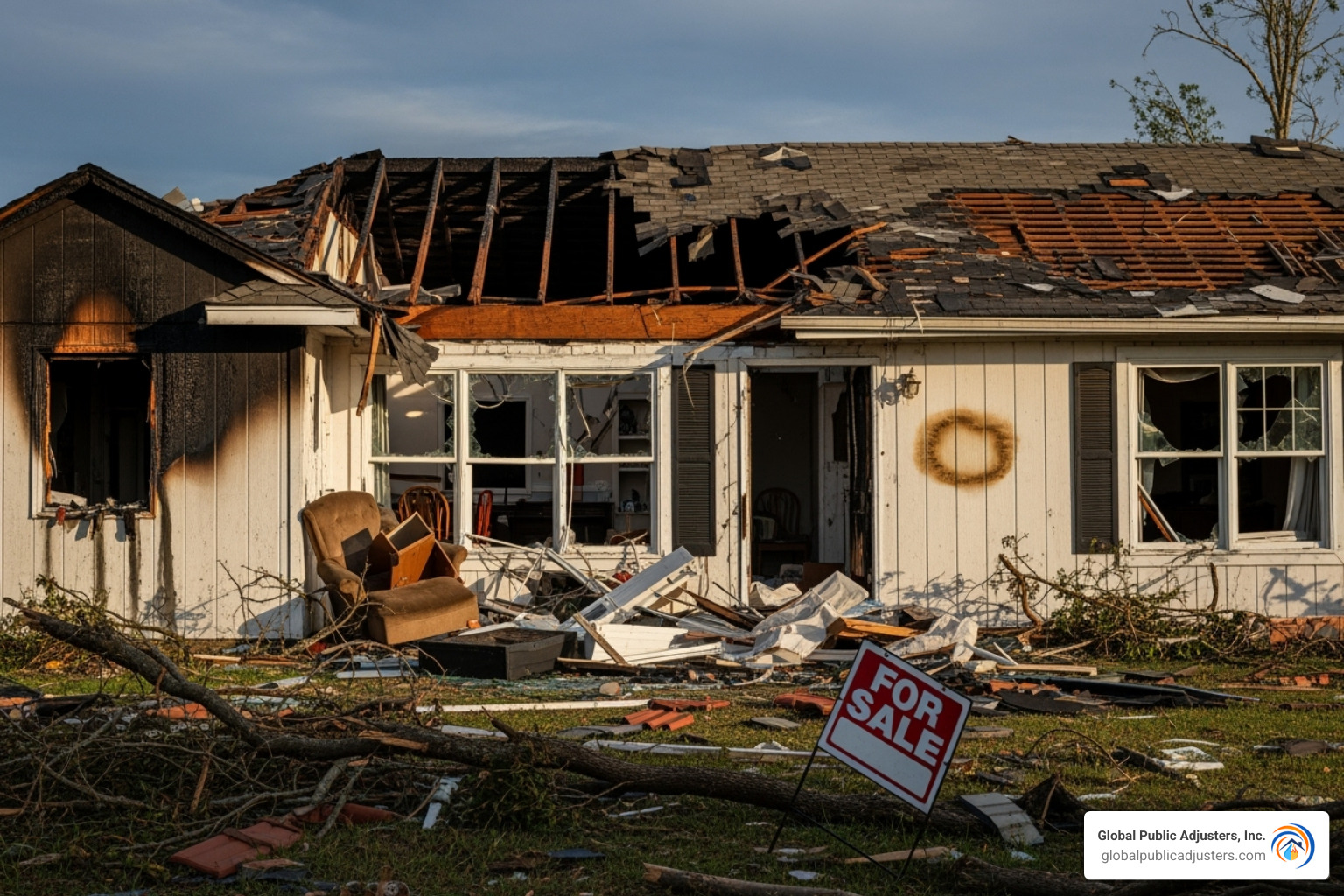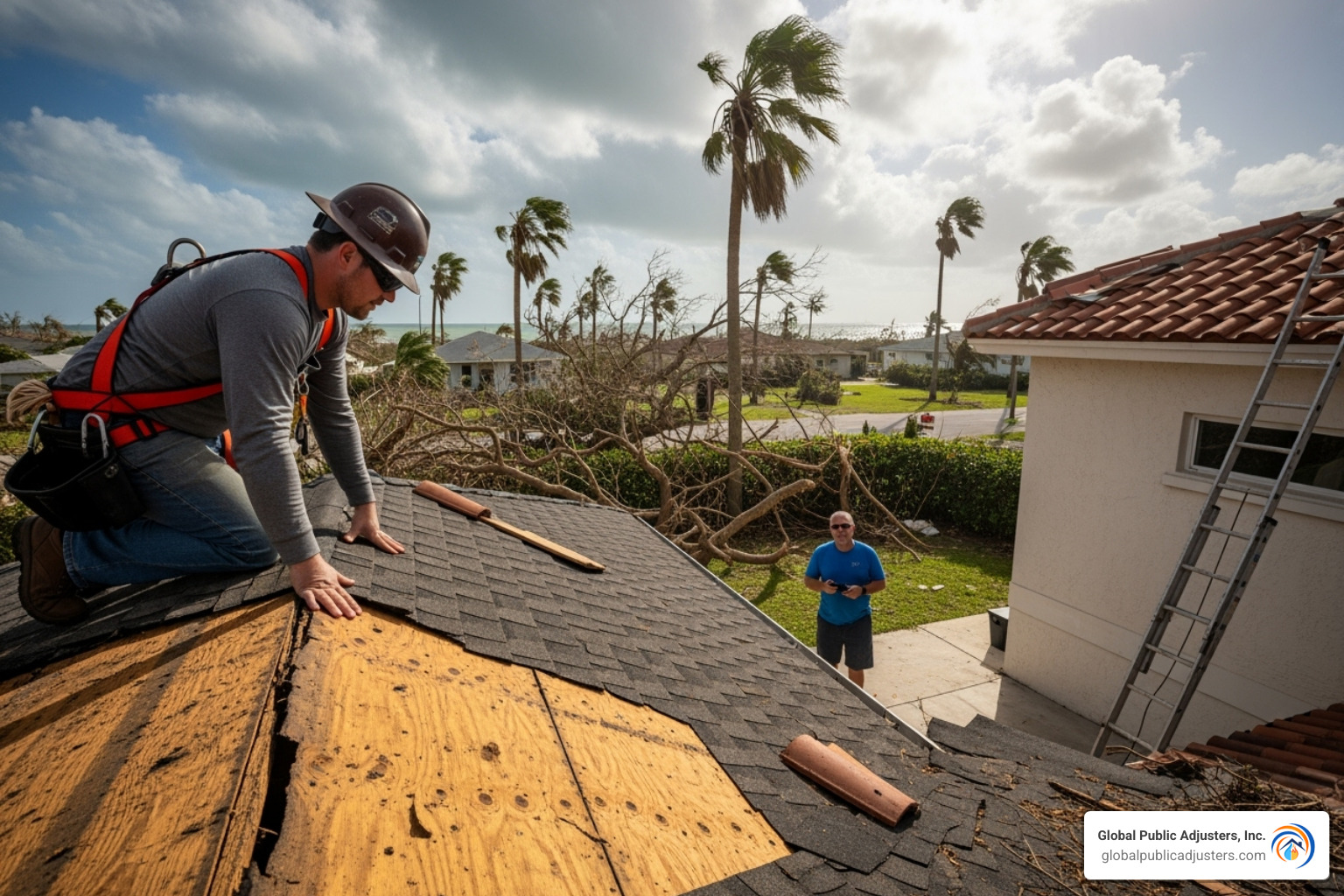Does insurance cover hail damage: 2025 Protect Your Home
Does Insurance Cover Hail Damage? The Quick Answer
Understanding Your Hail Damage Coverage: Home vs. Auto
Insurance policies are never one-size-fits-all, but the good news is that hail is usually a covered peril. Here are the essentials you really need to know (and nothing you don’t).
What Homeowners Insurance Covers
- Dwelling (Coverage A)– Pays to repair the roof, siding, windows and any other part of the structure damaged by hail.
- Other Structures (Coverage B)– Sheds, detached garages and fences fall under this bucket.
- Personal Property– If hail breaks through and ruins your belongings, this part responds.
Most HO-3 policies protect the dwelling on anopen-perilbasis (anything not excluded is covered) but treat your belongings on anamed-perilbasis. Always confirm your own limits and exclusions; every contract is a little different. For a deeper dive, seehow to determine your insurance needs.
What Auto Insurance Covers
- Comprehensive coverage– The must-have for hail. It pays for dents, dings, cracked glass and even a totaled vehicle.
- Liability-only– Won’t help you; it only protectsothersfrom damage you cause.
If your car is leased or financed, the lender will usually require comprehensive. Otherwise, consider the cost of repairs versus the value of your vehicle before you drop it.
Common Exclusions and Total Loss Scenarios
- Cosmetic-only damage– Some home policies now exclude dents that don’t affect functionality (especially on metal roofs).
- Pre-existing damage or neglect– Insurers pay fornewhail damage, not what you ignored last season.
- Total loss– When the repair estimate exceeds the property’s Actual Cash Value (ACV). In that case, you receive the ACV (minus your deductible) rather than repair money.
For more Florida-specific help, visit our page onProperty Damage Claims Orlando.
The Aftermath: Assessing Damage and Taking Immediate Action
Storm’s over—now what? Smart, quick moves protect both your propertyandyour insurance claim.
First Steps to Take After a Hailstorm
- Stay safe.Check for downed lines or gas leaks before walking the property.
- Document everything.Wide shots first, close-ups next. Place a coin or ruler next to dents for scale.
- Mitigate.Tarp holes, board windows, move soaked items. Keep receipts; many policies reimburse these costs.
- Hold off on permanent repairs.The adjuster needs to see the original damage.
Need help stopping leaks fast? See our guide onRoof & Ceiling Leaks.

Identifying Common Types of Hail Damage
- Roofs– Look for bruised or missing shingle granules and dents in metal flashing or gutters.
- Siding & windows– Cracks, chips, and shattered glass often hide in corners.
- Vehicles– Dents on horizontal panels; inspect all glass and mirrors.
Even small hail can cause big problems, so inspect carefully. More examples are inHow Can Hail Storms Damage My Home?.
The Financials: Does Insurance Cover Hail Damage Claims and at What Cost?
How Deductibles Apply
- Fixed deductible– Common for auto. Pay the first $500–$1,000, insurer covers the rest.
- Percentage deductible– Common for homes in Florida. A 2% deductible on a $300,000 dwelling means you pay $6,000 before coverage starts.
Will Filing Raise Your Premium?
A single “Act of God” claim usually doesn’t spike your rate, but multiple claims can wipe out discounts or trigger non-renewal. Insurers also raise rates region-wide after large hail events—something you can’t control. Curious what’s on your record? Pull your ownCLUE report.
Should You File at All?
File when the repair cost meaningfully exceeds your deductible or when damage affects safety and resale value (e.g., a $12,000 roof or a car that’s now a total loss). Skip claims for minor cosmetic dents worth only a few hundred dollars. Use our tips inNavigating Property Damage Claimsto crunch the numbers.

Navigating the Hail Damage Claim Process Step-by-Step
Filing and Working With the Adjuster
- Report ASAP.Call or use your carrier’s app; have your policy number and storm date ready.
- Send your photos/videos.More evidence = fewer disputes.
- Meet the adjuster.Walk the property together and point out every damaged area.
- Get independent estimates.A trusted contractor keeps everyone honest.
- Review the offer.Compare to estimates; ask questions before you sign anything.
For local insight, see ourHomeowners Claim Process Orlando FL.
Deadlines
Most states allow up to a year, but some policies require notice within 30–60 days. File promptly so the carrier can’t label damage “old.”
If Your Claim Is Denied or Underpaid
- Ask for the written reason.
- Gather new evidence.More contractor reports, photos or drone imagery can turn the tide.
- Use the internal appeal.Escalate before going outside.
- Hire a public adjuster.We re-inspect, value the loss and negotiate for you. Learn more inWhat To Do When Your Home Insurance Claim Is Denied?.
Frequently Asked Questions about Hail Damage and Insurance
We know dealing with hail damage can bring up a lot of questions. It’s totally normal to feel a bit lost! We often hear similar concerns from homeowners and car owners navigating the aftermath of a hailstorm. Let’s tackle some of the most common ones together.
How can I protect my property from future hail damage?
While we can’t control Mother Nature, we can certainly take smart steps to make our homes and cars more resilient against future hailstorms. Think of it as giving your property a little extra armor!
For your home, one of the best long-term investments isimpact-resistant roofing. If you’re planning a roof replacement anyway, choosing these shingles can make a huge difference in standing up to hail. Plus, some insurance companies even offer discounts for them! Before a storm hits, always remember to secure anyoutdoor itemslike patio furniture, trash cans, or grills. High winds that often accompany hail can turn these into dangerous projectiles. And for your windows, considerstorm shuttersorimpact-resistant windowsif you live in a particularly hail-prone area. Even closing your drapes and blinds can offer a tiny bit of extra protection during a storm.
When it comes to your car, the best defense is topark it under cover. A garage or carport is ideal. If you’re out and about when a storm warning pops up, look for a parking garage or, if safe, even an overpass (just be sure you’re not blocking traffic!). If covered parking isn’t an option, you can invest in a specializedcar coverorhail blanket. These padded covers can absorb much of the impact. The simplest tip? Stay updated onweather forecasts. Knowing when hail is predicted gives you time to move your vehicle to a safer spotbeforethe storm releasees its icy fury.
What is the difference between Actual Cash Value (ACV) and Replacement Cost Value (RCV)?
This is a really important question, because the answer directly impacts how much money you’ll receive if your property is damaged. It’s all about how your insurance policy values your things.
Actual Cash Value (ACV)is like looking at the “garage sale” price of your damaged property. It pays you the value of your damaged itemafteraccounting for depreciation. Think of depreciation as the wear and tear or age of an item. So, if your 10-year-old roof gets damaged by hail, an ACV policy would pay you what that 10-year-old roof was worthtoday, not the cost of a brand-new one. It subtracts money for its age and use.
On the flip side,Replacement Cost Value (RCV)is like getting a brand-new version. This coverage pays the cost to repair or replace your damaged property with new materials of similar quality, without subtracting anything for depreciation. If you have RCV coverage for your roof, your insurer would pay to replace it with a new roof, up to your policy limits. Many RCV policies pay out in two stages: an initial payment based on the ACV, and then a second payment for the “recoverable depreciation” once you’ve completed the repairs and submitted your invoices. This means you get the full cost to rebuild or replace! Most standard homeowners policies offer RCV for the dwelling itself, but personal belongings might be covered at ACV unless you specifically add RCV coverage for your contents. It’s always smart to check your declarations page to see what kind of coverage you have.
What happens if my mortgage company is on the insurance check?
It can be a little surprising when your insurance check arrives and your mortgage company’s name is right there next to yours! But don’t worry, it’s a very common practice, especially for larger property damage claims like a roof replacement or significant home repairs.
The reason for this is simple: your mortgage lender has a big financial interest in your home. After all, it’s the collateral for your loan! So, they want to make sure that any damage is properly repaired, protecting their investment. This means the check will likely be ajoint payeecheck, made out to both you and your mortgage company. Both signatures will be required to cash or deposit it.
Your lender will typically have a specific process for handling these funds. You’ll likely need to send the check to them first. They might then hold the money in anescrow accountor a controlled account. Funds are usually released to you ininstallmentsas the repairs are completed and inspected. This ensures the property is restored to its pre-damage condition. While this process can sometimes add a few extra steps and maybe a little delay, it’s a standard procedure designed to protect everyone involved. For more specific guidance on this, you can learn all abouthow to get your mortgage company to release insurance proceeds.
Conclusion: Securing Your Financial Recovery After a Hailstorm
Phew! Navigating the aftermath of a hailstorm and figuring out whetherdoes insurance cover hail damagecan feel like a real puzzle. But as we’ve walked through together, with a little knowledge and preparation, you truly can protect your property and get the financial recovery you deserve. It’s all about being prepared and knowing your rights.
Let’s quickly recap some of the most important takeaways from our chat:
First off,know your policy. Don’t wait for a storm to hit to understand your homeowners and comprehensive auto insurance policies. Get familiar with your deductibles, understand any exclusions, and make sure your coverage limits still make sense. This proactive step is your very best defense! Secondly,document everything. Remember all those photos and videos we talked about? They are truly your best friends when it comes to filing a claim. They provide undeniable evidence of the damage, which can make a huge difference.
Next,act promptly and prudently. Take those immediate steps to prevent more damage, like tarping a roof or boarding up windows. But here’s the kicker: try not to rush into permanent repairs until your claim has been properly assessed by the insurance company. And finally,be your own advocate. While insurance companies are there to help, their adjusters ultimately work for the company. Be ready to stand up for your rights, provide solid documentation, and get your own independent estimates. Your policyholder rights matter!
Sometimes, though, things get complicated. Maybe your claim is denied, or the offer feels way too low. Perhaps you just feel overwhelmed by the whole process. That’s perfectly understandable! For those complex situations, or if you find yourself feeling lost, underpaid, or even denied, you don’t have to face your insurance company alone. Homeowners and business owners can seek expert help from a public adjuster. We, Global Public Adjusters, Inc., are here to manage the process and advocate on your behalf. With over 50 years of experience, we specialize in maximizing settlements for various types of damage, offering expertise and advocacy to ensure you receive a fair outcome. We work foryou, not the insurance company.

Ready to get started? Get help with yourHail Damage Claims in Orlando.



